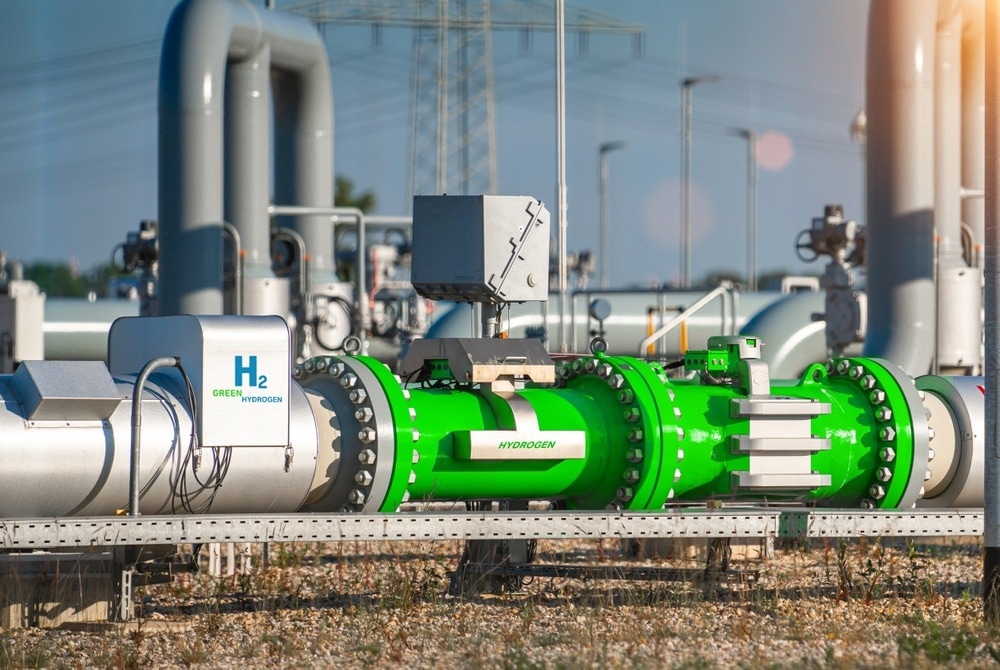Clean energy technologies are vital in the fight against climate change and the transition towards a more sustainable future. One promising avenue for accelerating the clean energy revolution is the application of Transition Metal Dichalcogenide (TMD) catalysts that have shown remarkable potential in various clean energy applications, offering improved performance, lower costs, and reduced environmental impact.

Image Credit: zhengzaishuru/Shutterstock.com
What are TMD Catalysts?
Transition Metal Dichalcogenides, or TMDs, are a class of two-dimensional nanomaterials made up of transition metals (e.g., molybdenum, tungsten) combined with chalcogens (e.g., sulfur, selenium) having unique properties that make them ideal candidates for catalytic applications. Their two-dimensional structure provides a high surface area, crucial for catalytic reactions, making them versatile and efficient in promoting various chemical reactions.
TMD Catalysts in Fuel Cells
Fuel cells are an essential component of clean energy technology, capable of efficiently converting chemical energy into electricity. Still, the sluggish kinetics of the oxygen reduction reaction (ORR) on the cathode of fuel cells have limited their widespread adoption. TMD catalysts have shown their prowess in accelerating the ORR. Their high catalytic activity and durability make them suitable candidates for replacing traditional platinum-based, costly and less sustainable catalysts. Integrating TMD catalysts in fuel cells can lead to cleaner, more efficient power generation.
TMD Catalysts in Solar Energy Conversion
TMDs are integrated into solar cell designs to increase their light-harvesting capabilities, allowing for better utilization of the available solar energy and enhancing the efficiency of photovoltaic cells by improving light absorption and charge separation. Additionally, TMDs can be used to drive photocatalytic reactions for solar fuel production, converting sunlight into storable fuels like hydrogen or hydrocarbons.
TMD Catalysts in Hydrogen Production
Hydrogen has the potential to replace fossil fuels in various sectors, such as transportation and industrial processes; with water being the only byproduct of its combustion, it is often hailed as the clean energy carrier of the future. However, hydrogen production methods currently in use, such as steam methane reforming, are not entirely eco-friendly.
Scientists have been able to significantly enhance the efficiency of water splitting, a key process in hydrogen production, by using TMD. The catalytic properties of TMDs enable the dissociation of water molecules into hydrogen and oxygen with lower energy inputs and at higher rates, making hydrogen production greener and more economically viable.

Image Credit: Audio und werbung/Shutterstock.com
Recent Developments
One recent and very significant advancement has been made by research at the City University of Hong Kong, which has achieved a groundbreaking development in clean energy technology with a highly efficient TMD (transition-metal dichalcogenide) catalyst. This catalyst significantly boosts hydrogen production through electrochemical water splitting, a promising path to replace fossil fuels. The catalyst, featured in the journal Nature, displays remarkable activity and stability in acidic conditions.
The researchers successfully synthesized TMD crystal materials with unconventional phases, opening doors to applications in optoelectronics, catalysis, energy storage, and superconductivity due to their unique semi-metallic characteristics. Their strategic exploration of noble metal development on 1T′-TMD nanosheets led to the creation of an electrocatalyst with outstanding performance in electrocatalytic hydrogen evolution. This discovery holds the potential to play a crucial role in advancing clean energy technologies.
Boosting TMD Solar Cell Efficiency
In a 2021 study, the researchers focused on flexible photovoltaic devices using semiconducting transition metal dichalcogenides (TMDs). TMDs have exceptional optical properties, making them suitable for high-specific-power photovoltaics. However, challenges like Fermi-level pinning at metal-TMD interfaces and limitations of traditional doping techniques have restricted TMD solar cell efficiency to under 2%.
The study addressed these issues using transparent graphene contacts to mitigate Fermi-level pinning, MoOx for doping and passivation, and a clean transfer method onto lightweight polyimide substrates. These improvements resulted in a record power conversion efficiency (PCE) of 5.1% and a high specific power of 4.4 W g−1 for flexible TMD (WSe2) solar cells. This performance is competitive with existing thin-film solar technologies and suggests the potential for even higher specific power values of up to 46 W g−1 with further advancements in TMD solar cell design and optimization.
TMD Catalysts in Environmental Remediation
Beyond their contributions to clean energy technologies, TMD catalysts can address environmental challenges, especially air pollution, by facilitating the removal of pollutants, such as nitrogen oxides and volatile organic compounds, from the atmosphere. By harnessing their catalytic properties, these materials can help reduce harmful emissions and improve air quality in urban areas.
Challenges and Future Prospects
TMD catalysts in advancing clean energy technologies and environmental remediation face. For instance, many TMD catalysts are still in the research and development stage, and scaling up their production for industrial use is a significant challenge. Similarly, TMDs can be sensitive to environmental conditions and degrade over time; hence, it is essential to develop TMD catalysts that maintain their performance over extended periods.
Despite these challenges, the future of TMD catalysts in clean energy technologies and environmental remediation looks promising. As research continues and technology advances, it is likely that these materials will play an increasingly significant role in accelerating the transition to a cleaner and more sustainable energy landscape.
References and Further Reading
Li, H., et al. (2020). Phase Engineering of Nanomaterials for Clean Energy and Catalytic Applications. Advanced Energy Materials. doi.org/10.1002/aenm.202002019
Nassiri Nazif, K., et al. (2021). High-specific-power flexible transition metal dichalcogenide solar cells. Nature Communications. doi.org/10.1038/s41467-021-27195-7
Shi, Z., et al. (2023). Phase-dependent growth of Pt on MoS2 for highly efficient H2 evolution. Nature. doi.org/10.1038/s41586-023-06339-3
TMD catalyst signifies major breakthrough for Clean Energy (2023). Retrieved from https://www.azonano.com/news.aspx?newsID=40415
Voiry, D., et al. (2016). Recent strategies for improving the catalytic activity of 2D TMD nanosheets toward the hydrogen evolution reaction. Advanced Materials. doi.org/10.1002/adma.201505597
Disclaimer: The views expressed here are those of the author expressed in their private capacity and do not necessarily represent the views of AZoM.com Limited T/A AZoNetwork the owner and operator of this website. This disclaimer forms part of the Terms and conditions of use of this website.